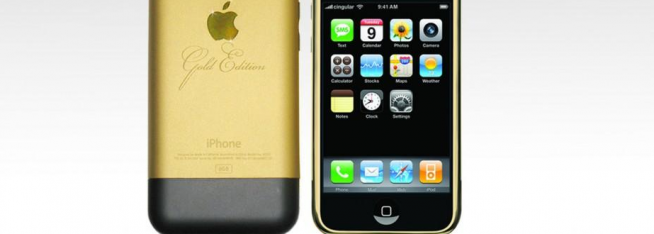Reading between the 2011 Luxury Daily headlines shows that high-end marketers were increasingly interested in growing their social media networks and boosting mobile commerce and ecommerce transactions and will continue to do so in 2012.
Here is a breakdown of what happened in the luxury marketing arena in 2011.
Brands Last year’s most talked-about brand was Burberry. The British fashion group was applauded for its innovative use of social media around the world along with its ecommerce and mobile commerce platforms that were both upgraded in 2011.
Burberry received the No. 1 ranking in L2 Think Tank’s Digital IQ Fashion Index last year (see story).
Indeed, Burberry used social media for much of its marketing efforts in the last year, and celebrated its 10 millionth Facebook fan on Dec. 24 with the creation of three unique images designed by chief creative officer Christopher Bailey.
Additionally, Burberry received a gifted rating in L2 Think Tank’s 2011 Prestige 100: China IQ largely in part to the brand’s social media presence in China (see story).
Burberry was also named Luxury Daily’s Luxury Marketer of the Year for 2011 (see story).
Ralph Lauren was the second-most buzzed-about luxury brand in 2011, earning points for its 360-degree marketing strategies that included out-of-home advertising, personalized QR codes and numerous New York Times partnerships.
Outside of the fashion world, luxury automaker BMW and hotel chain Ritz-Carlton were also mentioned regularly on Luxury Daily.
Indeed, BMW’s Mission to Drive campaign featured placement in December’s Mission: Impossible movie, in-store events, print advertising, mobile efforts and numerous social media posts (see story).
Meanwhile, Ritz-Carlton continued to expand its properties worldwide, increase its corporate social responsibility efforts and converse with consumers via social media and email marketing in 2011.
Channels Luxury brands have focused their marketing strategies in nearly all mediums, but the most popular and most effective channel in 2011 was social media.
Indeed, luxury marketers should continue with these efforts in 2012. In fact, Juniper Research predicts that 1.3 billion consumers will rely on their mobile devices to access social media sites by 2016 (see story).
Many luxury brands have sought to develop a personality through their Twitter accounts that offers behind-the-scenes thoughts, pictures and videos to engage consumers and make them feel as if they are part of the brand.
Marketers also ventured into newer platforms such as Tumblr and Google+ to increase brand reach and further envelope consumers in a branded world.
Luxury brands such as Bulgari, Oscar de la Renta, Tory Burch and Burberry all sold products through Facebook this year.
Mobile applications, commerce and marketing through QR codes also gained followers last year as did cause and event marketing and corporate social responsibility.
Issues Mergers and acquisitions ran rampant in 2011, with many major conglomerates looking to infiltrate independently-owned luxury brands.
The rat race between industry giants LVMH Moet Hennessey Louis Vuitton, PPR, Richemont and Labelux is likely a sign of optimism and growth in the luxury industry (see story).
Indeed, there was a whirlwind of mergers and acquisitions in the footwear industry in 2011.
For example, footwear manufacturer Jones Group acquired Kurt Geiger and Labelux acquired Jimmy Choo.
Additionally, Richemont acquired online luxury retailer Net-A-Porter and LVMH bought jeweler Bulgari.
LVMH also upped its ownership of Hermés, increasing its shares from 21.4 percent to 22.3 percent and owns 16 percent of its voting rights (see story).
In addition to mergers and acquisitions, counterfeiting and trademark protection was still a large problem for luxury brands in 2011.
Indeed, luxury conglomerates fought in the courts against unauthorized third-party and counterfeit Web sites, and luxury brands such as Christian Louboutin fought for its right to trademark its red sole.
People More often than not, the public does not take the time to recognize or seek out input from the brains behind their favorite brands.
However, designers and creative directors took the time to reach out to brand loyalists and interact with them via social media this year.
For example, Burberry’s chief creative officer Christopher Bailey created numerous videos to fans that were posted on the marketer’s social media platforms.
Additionally, brand namesake and founder Ralph Lauren starred in a narrated video that was featured in the brand’s New York Times ad spots.
Milton Pedraza, CEO of New York-based Luxury Institute, has been consulted numerous times throughout 2011 on topics such as CRM, share-holding, piracy and mergers and acquisitions.
Ron Kurtz, CEO of the Atlanta-based American Affluence Research Center has been helpful for questions of luxury branded advertising, engaging the affluent consumer and creating a 360-degree brand experience.
Unity Marketing’s Pam Danziger is most questioned about retail and the inner thoughts of the luxury shopper. The Stevens, PA-based executive has provided insight on a number of luxury brand advertising strategies and the consumer for which they are aimed.
Chris Ramey, president of Affluent Insights, Miami has been interviewed numerous times on the effectiveness of various luxury marketing campaigns in all industries. He has been most helpful in providing ideas on how luxury brands can work to achieve a successful and united multichannel approach.













